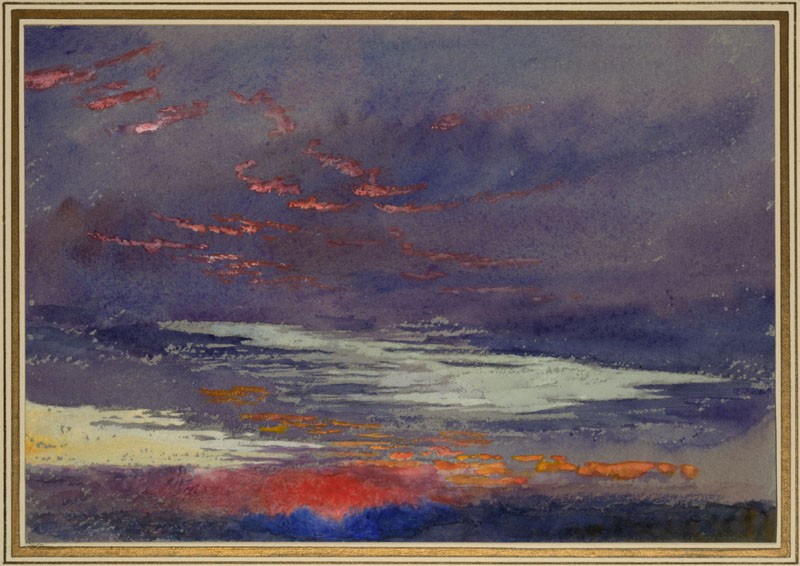Barnard's Star,House of Pleasures (House of Tolerance) just some 6 light-years away, has intrigued astronomers for over a century.
Does the second-closest stellar system to us host any planets?
Though this system has hoodwinked astronomers with planetary signals before, researchers say they're confident they have detected three new planets and confirmed another. After peering at Barnard's Star over 112 nights, scientists using a powerful telescope in Chile found compelling evidence of four particularly small exoplanets, each just some 20 to 30 percent the size of Earth. That makes them considerably smaller than Mars, which is about half Earth's size.
"It’s a really exciting find — Barnard’s Star is our cosmic neighbor, and yet we know so little about it," Ritvik Basant, an exoplanet researcher at the University of Chicago who led the research, said in a statement. "It’s signaling a breakthrough with the precision of these new instruments from previous generations."
SEE ALSO: A dramatic total lunar eclipse is coming. You don't want to miss it.The new research has been published in The Astrophysical Journal Letters.
Each of these worlds is probably rocky, as opposed to a gas giant planet like Jupiter, but they almost certainly aren't habitable. That's because they're searing hot, as they zip closely around Barnard's Star in just a matter of days. Even so, their discovery shows new ways that astronomers can find such small, nearly imperceptible worlds, known as "sub-Earths."
It was tremendously challenging to detect these planets. For one, they're located right next to their luminous star, making them daunting to see. And from our perch on Earth, we don't see these worlds transiting in front of their star, which is a common way planets beyond our solar system, or exoplanets, are found.
 A conception of the surface of a hot world orbiting Barnard's Star. Credit: ESO / M. Kornmesser
A conception of the surface of a hot world orbiting Barnard's Star. Credit: ESO / M. Kornmesser To find these worlds, the astronomers used something called the radial velocity technique, wherein a specialized instrument on a telescope looks for a star exhibiting extremely slight wobbles. These wobbles are caused by the gravitational influence, however small, orbiting planets have on their star, which subtly alters the star's emitted light. (In this case, a high resolution instrument called MAROON-X was mounted on the over 26-foot-wide Gemini North telescope, located at 8,930 feet in the profoundly dark Chilean desert.)
"The powerful instrument measures these small shifts in light so precisely that it can even tease apart the number and masses of the planets that must be circling the star to have the observed effect," the National Science Foundation's NOIRLab — which runs big telescopes across the U.S. and globally — said in a statement.
Astronomers are keenly interested in understanding planets around stars like Barnard's, which is a red dwarf. These are small stars, but the most common in the universe. Importantly, red dwarfs are cooler than more massive stars, meaning they can host habitable zones (regions of a solar system that are temperate enough for worlds to harbor liquid water) close to themselves, where planets often form. Scientists are also using the James Webb Space Telescope to discern if such rocky worlds around red dwarfs could host atmospheres, like Venus or Earth.
If Barnard's Star was hiding four rocky sub-Earths, what else is hiding out there in the cosmos?
(Editor: {typename type="name"/})
 The Sound and the “Furious”
The Sound and the “Furious”
 Redux: Eerie Fictions of the Afternoon by The Paris Review
Redux: Eerie Fictions of the Afternoon by The Paris Review
 A Tortoise Stakeout with Patricia Lockwood by Richard Cooke
A Tortoise Stakeout with Patricia Lockwood by Richard Cooke
 Revisited: Watson and the Shark by Elizabeth McCracken
Revisited: Watson and the Shark by Elizabeth McCracken
 Best Samsung deal: Save $60 on 64GB Samsung Galaxy Tab A9
Best Samsung deal: Save $60 on 64GB Samsung Galaxy Tab A9
Sabalenka vs. Svitolina 2025 livestream: Watch Madrid Open for free
 TL;DR:Live stream Sabalenka vs. Svitolina in the 2025 Madrid Open for free on RTVE. Access this free
...[Details]
TL;DR:Live stream Sabalenka vs. Svitolina in the 2025 Madrid Open for free on RTVE. Access this free
...[Details]
Staff Picks: Spells, Cephalopods, and Smug Salads by The Paris Review
 Staff Picks: Spells, Cephalopods, and Smug SaladsBy The Paris ReviewMarch 29, 2019This Week’s Readin
...[Details]
Staff Picks: Spells, Cephalopods, and Smug SaladsBy The Paris ReviewMarch 29, 2019This Week’s Readin
...[Details]
A Storm Is Blowing by Brian Dillon
 A Storm Is BlowingBy Brian DillonApril 1, 2019Arts & CultureJohn Ruskin, Study of Dawn, 1868It’s
...[Details]
A Storm Is BlowingBy Brian DillonApril 1, 2019Arts & CultureJohn Ruskin, Study of Dawn, 1868It’s
...[Details]
Poetry Rx: Ordinary Sex by Sarah Kay
 Poetry Rx: Ordinary SexBy Sarah KayApril 11, 2019Poetry RxIn our column Poetry Rx, readers write in
...[Details]
Poetry Rx: Ordinary SexBy Sarah KayApril 11, 2019Poetry RxIn our column Poetry Rx, readers write in
...[Details]
Samsung Unpacked stream is set for May 12, 2025
 We're just a handful of days away from the next big Samsung announcement.The Korean tech giant sent
...[Details]
We're just a handful of days away from the next big Samsung announcement.The Korean tech giant sent
...[Details]
One Word: Avuncular by Myriam Gurba
 One Word: AvuncularBy Myriam GurbaMarch 19, 2019One WordIn our column One Word, writers expound on t
...[Details]
One Word: AvuncularBy Myriam GurbaMarch 19, 2019One WordIn our column One Word, writers expound on t
...[Details]
Flowers for Yellow Chins, Bruised Eyes, Forsaken Nymphs, and Impending Death by Katy Kelleher
 Flowers for Yellow Chins, Bruised Eyes, Forsaken Nymphs, and Impending DeathBy Katy KelleherApril 10
...[Details]
Flowers for Yellow Chins, Bruised Eyes, Forsaken Nymphs, and Impending DeathBy Katy KelleherApril 10
...[Details]
The Corner of ‘MacDoodle St.’ and Memory Ln.
 The Corner of MacDoodle St.and Memory Ln.By Mark Alan StamatyApril 4, 2019ComicsMark Alan Stamaty’sV
...[Details]
The Corner of MacDoodle St.and Memory Ln.By Mark Alan StamatyApril 4, 2019ComicsMark Alan Stamaty’sV
...[Details]
Google Pixel Buds Pro 2: $40 off at Amazon
 SAVE 17%:As of May 9, you can get the Google Pixel Buds Pro 2 for $189, down from $229, at Amazon. T
...[Details]
SAVE 17%:As of May 9, you can get the Google Pixel Buds Pro 2 for $189, down from $229, at Amazon. T
...[Details]
A Storm Is Blowing by Brian Dillon
 A Storm Is BlowingBy Brian DillonApril 1, 2019Arts & CultureJohn Ruskin, Study of Dawn, 1868It’s
...[Details]
A Storm Is BlowingBy Brian DillonApril 1, 2019Arts & CultureJohn Ruskin, Study of Dawn, 1868It’s
...[Details]
Get Rid of Windows 10 Ads, Office Offers and Other Annoyances
Staff Picks: Spells, Cephalopods, and Smug Salads by The Paris Review

接受PR>=1、BR>=1,流量相当,内容相关类链接。